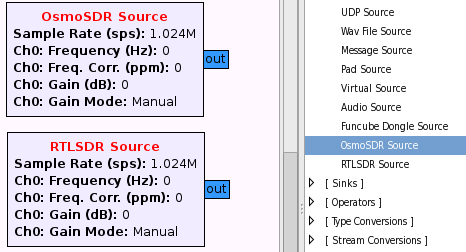Gnuradio Installation Windows
Posted By admin On 10/05/18
Just get it here and double click to install. Download and Install PyGTK. One package that Anaconda doesn't include that GNURadio depends on is PyGTK. After installing Anaconda, download and install PyGTK from here. The default settings are fine. Install Python Packages. GNURadio requires a couple of additional Python packages.
Introductory Tour of the GNU Radio Project Before you read too far, I have produced a coding guide:. Don't overlook it. • • • • • • • • • Introduction I am writing this guide because GNU Radio is a great tool that can easily be overlooked. The documentation is poor and just getting started is not obvious.
There is a tight niche between GNU Radio developers and programmers/users. I hope to explain GNU Radio, what it is, why its useful, and how to use it. GNU Radio is a set of signal processing tools for the computer. It encompass hundreds of signal processing blocks and utility applications.

GNU Radio can tie in with hardware such as the USRP and various ADC/DAC pci cards. Signal processing blocks are written in C++, while creating flow graphs and connecting signal blocks is done is an interpreted language called Python. GNU Radio is. • An API for creating signal blocks (C++/Python) • A runtime environment for signal processing • A library of signal processing blocks • User scripts and applications • Hardware drivers (USRP/USRP2/VRT) • An application for creating flow graphs () USRP The USRP is big ADC/DAC with a USB plug, with a decent price (under $1k). This hardware device is probably GNU Radio's best friend. • Installing GNU Radio Installing GNU Radio is probably the biggest leap for a beginner. GNU Radio can run on any platform, however, some installations are easier than others.
GNU Radio must be compiled from source and all of the dependencies have to be taken care of. If your heart is set on Windows, I recommend using MSVC. If you can spare an extra PC, I recommend installing Ubuntu Linux. Windows GNU Radio definitely works in Windows. Woh Kehti Hai Suno Jana Free Mp3 Download on this page. Build with MSVC and CMake: • Linux Ubuntu Linux is very nice for GNU Radio because all the dependencies can be easily met. You simply have to select the correct check boxes and click install. Fedora Core also makes for a pretty easy installation, but with a little more effort.
Then follow the. Using GNU Radio Introdution In this section, I will explain how to use the GNU Radio API in the Python programming language. If you are interested in a graphical interface like Simulink, check out. Python A signal processing flow graph is implemented in Python. Python is an object oriented language, much like C++ and Java.
Python code is very neat and organized and you will never have to compile it. There are no semicolons, or curly braces in Python. Rather, the code relies heavily on indentation levels and newlines. If you are familiar with programming, understanding the basics of Python should be trivial.
Helpful Python References • •. You can buy this at the book store or get it free online. This guide is full of examples and tips. The online version includes python files that go along with the text. • Learning By Example The quickest way to understand how to use GNU Radio is to start with some basic examples. Ab Panelbuilder32 Software Download.
Razer Blade Suitcase Rarlab. My examples are written in Python. You can copy them into a text file and run them with the Python interpreter. A Simple Flow Graph #bring in blocks from the main gnu radio package from gnuradio import gr #create the top block tb = gr.top_block() #create a signal source src = gr.null_source(1) #1 indicates the data stream size #create a signal sink sink = gr.null_sink(1) #connect the source to the sink tb.connect(src, sink) #run the flow graph tb.run() • As you may have guessed, this flow graph does nothing. The null source spits out zeros, and the null sink takes a data stream and does nothing with it. Also, there is nothing in the flow graph to control the data rate, the CPU usage should climb to 100%. The Phone-Tones Example #bring in blocks from the main gnu radio package from gnuradio import gr #bring in the audio source/sink from gnuradio import audio #create the flow graph tb = gr.top_block() #create the signal sources #parameters: samp_rate, type, output freq, amplitude, offset src1 = gr.sig_source_f(32000, gr.GR_SIN_WAVE, 350,.5, 0) src2 = gr.sig_source_f(32000, gr.GR_SIN_WAVE, 440,.5, 0) #an adder to combine the sources #the _ff indicates float input and float output adder = gr.add_ff() #create a signal sink sink = audio.sink(32000) #connect the adder #the adder has multiple inputs. #we must use this syntax to choose which input to use tb.connect(src1, (adder, 0)) tb.connect(src2, (adder, 1)) #connect the adder to the sink tb.connect(adder, sink) #run the flow graph tb.run() • Sampling Rates: The same sample rate, 32000, is used in the creation of signal sources and the audio sink.